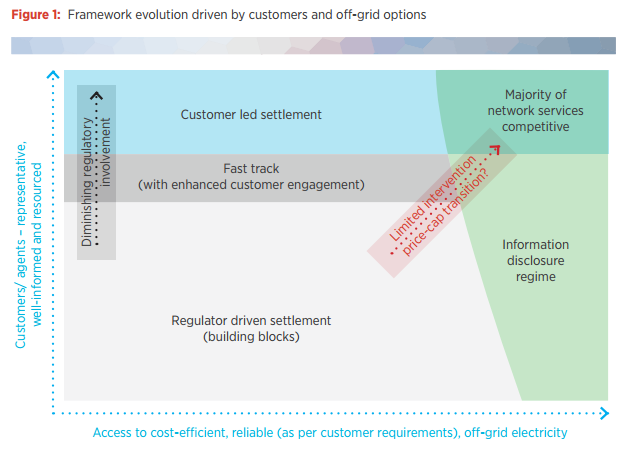Countdown to COAG Energy Council
In the countdown to the meeting of the COAG Energy Council on 19 August 2016, some are speculating that Ministers will act to “overhaul the National Energy Market”. Ministers face calls to introduce ‘capacity markets’, review transmission investment frameworks and introduce ‘truly national’ energy markets.
The debate has been triggered by a South Australian energy ‘crisis’, which saw high and volatile wholesale electricity and gas prices and an extraordinary intervention by the South Australian Government in July requesting that ENGIE recommission the 247 MW mothballed Pelican Point power station, with the aim of reducing wholesale prices to large customers.
How did we get here?
While the cause of price volatility has predictably been fiercely debated – with some blaming high wholesale gas prices, intermittent wind or interconnection works – there seems increasing recognition that Australia’s energy policy coordination is at least part of the problem. As the Foundation Chairman of AEMO, Tom Parry, stated:
“The inevitable transition from a carbon-intensive to a less carbon-intensive generation fleet also requires clear and consistent national policy. This too has been largely missing in action. We have a mixed bag of state-based and national measures that reflect politics rather than properly thought through policy.”
Australia’s federalist energy governance has struggled to manage integrated reforms across national markets, and we are yet to achieve national consistency in critical areas like consumer protection frameworks, energy pricing or coal seam gas development. Rapid market activity and falling technology costs are outpacing a patch-worked and confused policy and regulatory agenda.
While some nationally agreed reforms remain in the ‘too hard’ basket, individual States have pressed ahead with disparate initiatives without assessing flow-on impacts in a national energy system. To their credit, COAG Energy Council Ministers recognised the need for better integration of carbon and energy policy, stating in last December’s Communique:
“The successful integration of carbon and energy policies will be critical to meeting Australia’s emissions reduction target of 26 to 28 per cent below 2005 levels by 2030. Ministers will develop a national approach to connect environmental outcomes and energy policy in the interests of consumers. The Council has asked officials to prepare advice that will allow it to better understand the potential impact of carbon policies on the energy sector to facilitate better integration.”
While the commitment is welcome, not much has changed. Ministers face practical barriers to better integration of carbon and energy policy, as the Federal Minister for the newly consolidated Energy and Environment portfolio noted recently:
“The difficult job I have is: how do you co-ordinate a national approach when all of these states have their own targets, their own different state-based incentives, and we’ve also got our national target and our national incentives? And that’s what we’re trying to work through.”
Hon Josh Frydenberg MP, The Australian, July 28 2016
So what could COAG Energy Council do in the short term?
If sufficiently empowered, Australia’s national energy market institutions can provide a strong role supporting coherent policy and anticipating the need for market reforms. The Australian Energy Market Operator has actively anticipated the potential implications of the changing generation mix for power system security, including in its work with ElectraNet in South Australia. Last month, the AEMC announced a review of the effectiveness of current market frameworks to achieve power system security, again in partnership with AEMO and industry.
One practical action COAG Energy Council could take to support integrated carbon and energy policy would be to establish a standing, institutional function to assess and advise governments on their market interventions.[1] Just as governments subject new initiatives to a Regulatory Impact Statement, all Ministers should welcome the opportunity for their proposed carbon and energy policy initiatives to be assessed for their impact on national energy markets or network efficiency. To ensure an assessment independent of any government or political party, the COAG Energy Council should commission the AEMC to undertake this role, providing advice on the implications of individual Federal, State and Territory carbon and energy policy initiatives.
While recognising the role of governments, the AEMC could provide advice on the consistency of proposed measures with the national energy objectives. Ministers could be confident that individual jurisdictional carbon or energy policy measures would interact with existing national energy policy settings in a coherent and coordinated way and that their implication on the broader National Electricity Market is fully assessed upfront.
Australia can avoid descending into dysfunctional clashes between policy makers and real-time market operators. New York is currently seeing a chaotic debate in which the Independent System Operator has criticised the NY State for developing its 50% renewable energy framework without sufficient regard to bulk transmission requirements and reliability. The Government has in turn criticised NYISO as “held captive by [its] stakeholders” and the analysis as “misleading, incomplete and grossly inaccurate”.
Australia’s grid can enable a low carbon future without compromising reliability and security, but markets don’t deal well with constant policy or regulatory risk. The August meeting of energy ministers could focus on the following four priorities:
- Better integration of carbon and energy policy across State and Federal borders by agreeing the AEMC will assess individual Federal, State and Territory carbon and energy policy initiatives that may impact on national energy markets or network efficiency;
- A constructive, bipartisan agreement on the transition of the Emissions Reduction Fund Safeguard Mechanism to a technology-neutral ‘baseline and credit’ scheme;
- The removal of unnecessary roadblocks to the timely development of new gas supply sources to reduce price risk to industry, businesses and households; and
- Implementing the outstanding governance reforms promised in December 2015.
So what could COAG Energy Council do in the longer term?
The South Australian ‘crisis’ has highlighted again the need for a planned, long-term transition to Australia’s energy future. This is particularly important given customers will rely increasingly on dynamic competition for efficient and innovative energy services. They cannot rely on heavily administered markets with constant government intervention.
Energy regulation will also require a planned, rather than accidental, transition to support customers. As part of the Electricity Network Transformation Roadmap that the Energy Networks Association (ENA) is undertaking with the CSIRO, Cambridge Economic Policy Associates (CEPA) recently identified a range of regulatory options so that customers can get the best value from changes in technology and services. The report received input and review by internationally-recognised regulatory and energy market experts, Professors David Newbery and Stephen Littlechild.
The CEPA study indicates energy regulation will need to be ‘customer led’ and ‘lighter touch’ to cope with rapid technology changes. CEPA proposed ten practical steps for regulatory reform. With significant technology change and competition from off-grid services, future regulation is likely to be built on ‘customer-driven settlements’, improved incentives and information disclosure.
CEPA’s recommended pathways for regulation include:
- setting total expenditure allowances, as occurs in the UK, rather than separate operating and capital expenditure allowances to remove preferences for network investment over alternatives;
- reducing the ‘rules-based’ approach by focusing on outputs that customers value and incentives that deliver them;
- regulation that places greater ‘weight’ on networks’ engagement with customers, for instance through fast-tracking proposals with strong support; and
- improving tests of regulated services to remove costly regulation where it is no longer required.

The CEPA options will be discussed with key stakeholders as part of the Electricity Network Transformation Roadmap consultation.
The CEPA report – Future Regulatory Options for Electricity Networks – and summary document are available here.
[1] For further information, see ENA Submission to Australian Energy Markets Governance Review, August 2015


